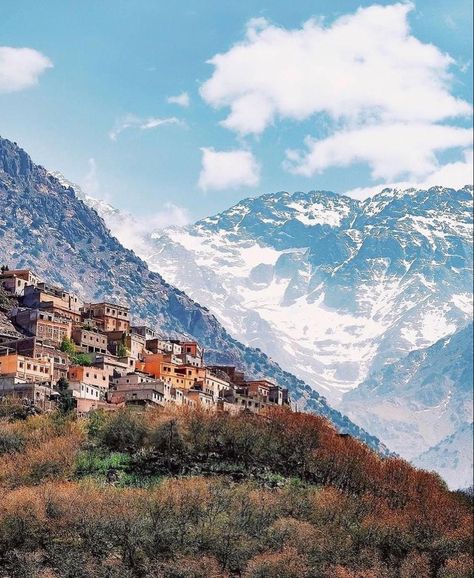
Welcome to Imlil, a picturesque Berber village nestled in the High Atlas Mountains, about 90 km from Marrakech. Known as the starting point for treks to Mount Toubkal, the highest peak in North Africa, Imlil offers breathtaking landscapes, traditional Berber hospitality, and a peaceful retreat from the city. Whether you're an avid trekker, a nature lover, or simply seeking an authentic Moroccan experience, Imlil is the perfect destination.
Trekking & Adventure – Imlil is the main base for hikers looking to conquer Mount Toubkal (4,167m) or explore nearby valleys and villages.
Scenic Beauty – Surrounded by lush green terraces, walnut groves, and snow-capped peaks, Imlil offers stunning views in every season.
Authentic Berber Experience – The village provides an opportunity to stay in traditional guesthouses and experience Berber culture and hospitality.
Traditional Cuisine – Enjoy homemade Berber tagines, fresh mountain bread, and aromatic mint tea while taking in panoramic mountain views.
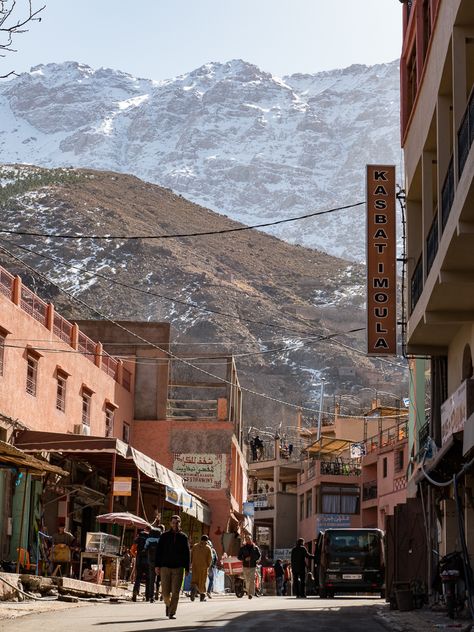
Mount Toubkal Trek
The ultimate challenge for adventure seekers. The two-day trek to the summit of Mount Toubkal rewards hikers with breathtaking views over the Atlas Mountains and the Sahara Desert.
Aremd Village
A picturesque Berber village just above Imlil, offering traditional mud-brick houses, friendly locals, and a glimpse into rural mountain life.
Imlil Waterfall
A short walk from the village, this small but beautiful waterfall is a refreshing spot to relax and enjoy nature.
Kasbah du Toubkal
A famous eco-lodge offering stunning views of the mountains. Even if you’re not staying, you can visit for a meal or tea on the terrace.
Mule Trekking
For those who prefer a less strenuous adventure, mule treks offer a unique way to explore the valley and nearby villages.
Explore the Azzaden Valley
A quieter and less-visited valley near Imlil, known for its red rock formations, peaceful trails, and traditional Berber hamlets.
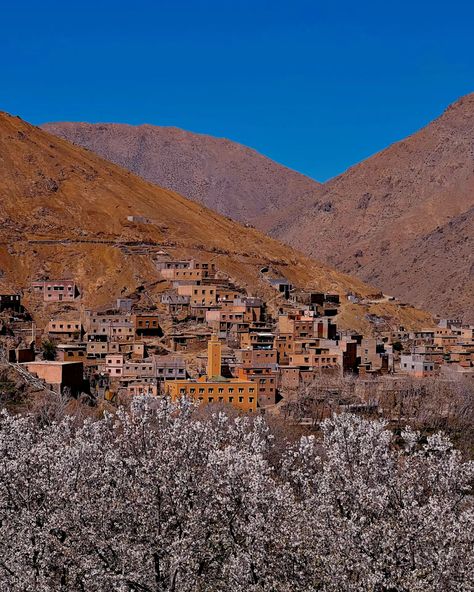
Berber Tagine – Slow-cooked with lamb, chicken, or vegetables, flavored with saffron, cumin, and preserved lemon.
Fresh Mountain Bread – Locally baked bread, perfect for dipping in olive oil and honey.
Mint Tea – The classic Moroccan welcome drink, enjoyed with breathtaking mountain views.
Orange & Cinnamon Dessert – A refreshing and simple dessert made with fresh oranges and a sprinkle of cinnamon.
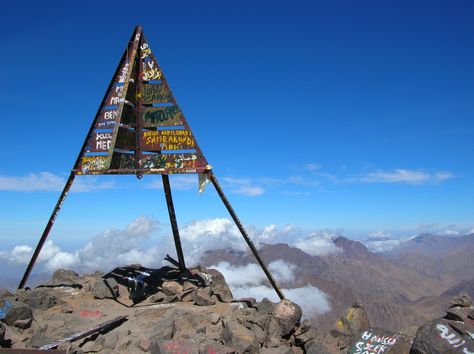
Ourika Valley – A stunning valley with waterfalls, perfect for a day trip.
Agafay Desert – Experience the rocky desert landscape just outside of Marrakech.
Marrakech – Just a 1.5-hour drive away, ideal for exploring the souks, palaces, and gardens of Morocco’s vibrant city.
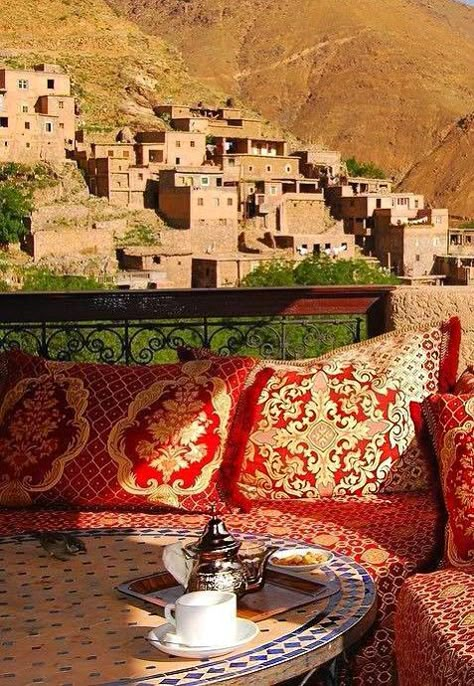
Imlil is home to traditional Berber guesthouses (gîtes), eco-lodges, and mountain refuges. Many offer cozy accommodations with panoramic terraces, fireplaces, and home-cooked meals.
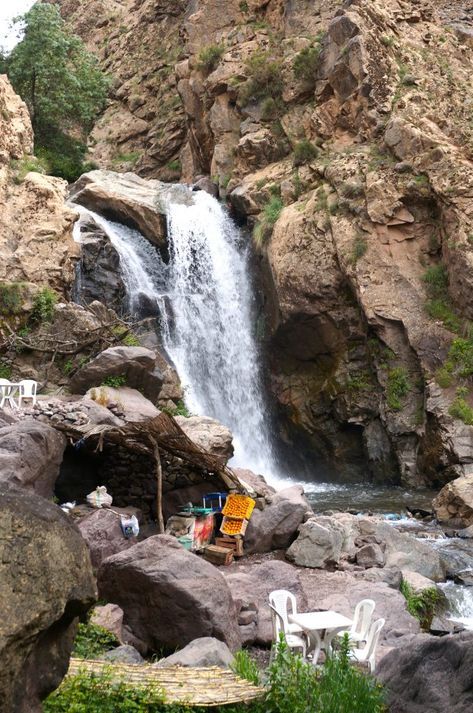
By Car – A scenic 1.5 to 2-hour drive from Marrakech. You can hire a private driver for a comfortable journey.
By Taxi – Shared or private grand taxis from Marrakech’s Bab er-Rob bus station.
By Trekking – Adventurous travelers can hike from nearby valleys such as Ourika or Asni.
By Air – The nearest airport is Marrakech Menara Airport (RAK), with private transfers available to Imlil.
To make your trip seamless, MarocWonder offers private transport services from Marrakech to Imlil. Enjoy a comfortable and scenic drive with experienced drivers who know the best routes.
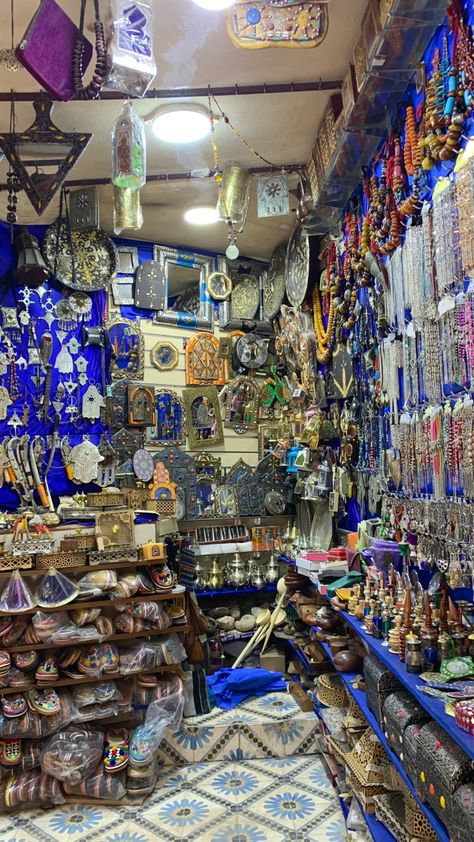
Spring (March to May) – Pleasant weather, blooming landscapes, and ideal hiking conditions.
Summer (June to August) – Warm but not as hot as Marrakech, with cool evenings.
Autumn (September to November) – Crisp mountain air, perfect for trekking and photography.
Winter (December to February) – Snow blankets the peaks, creating a magical setting for winter trekking.

MarocWonder, travel to Morocco made personal
Copyright © 2025. All rights reserved and powered by